Copperfingertips - Represent The Human Race

More Posts from Copperfingertips and Others
A lot of people are really scared and angry because of the results of the newest climate change reports — as they should be. But I’m already seeing a lot of posts and news reports like “HERE’S WHAT YOU CAN DO TO FIGHT GLOBAL WARMING” and bizarrely enough, the answers are never like “weed out climate change deniers from your government, impose strict new rules for the corporations that are creating most of the emissions, pour government resources into alternate forms of fuel, etc.” It’s always like “carpool to work!”
Look. Of course you should be working to reduce waste in your own life. But let’s not fucking pretend that consumers are the ones who made this mess. You know what another recent study found? Just 100 companies are responsible for 71% of global emissions. If the rest of us stopped ALL WASTE and fucking ascended to a higher plane of existence that no longer requires consumption of any kind, the world would still be absolutely fucked if those 100 companies keep on as they do.
I hate this personal responsibility model when it comes to conservation. By ignoring the actual source of the problem and focusing on individuals instead, guess who gets targeted? The absolute most vulnerable individuals on the planet. When people advocate personal responsibility, somehow they’re never talking about billionaires and their private jets. They’re creating straw bans that will make life more dangerous for people with disabilities. They’re shaming women for using disposable menstrual products. They’re criticizing the poor and destitute for using “wasteful” products because they’re all they can afford. They’re making vaguely eugenic statements about getting people in “third world countries” to stop ~breeding~ so much. It’s monstrous.
Stop shaming consumers for the sins of corporations and their powerful investors. Stop placing the blame at the feet of the people who already have the hardest time getting through life. Do something, and by “do something” I mean buy a reusable coffee cup on the way to fucking vote. Go to a protest. Call a representative. Demand accountability from the people who got us into this mess.



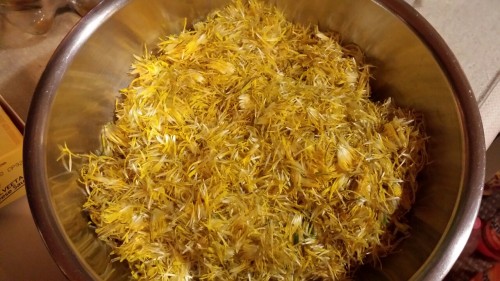
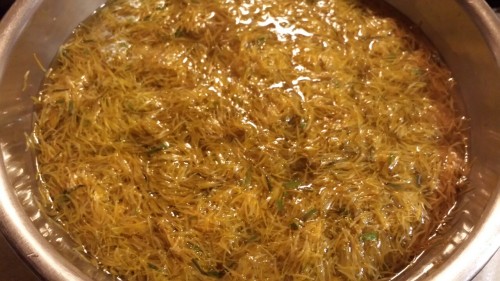
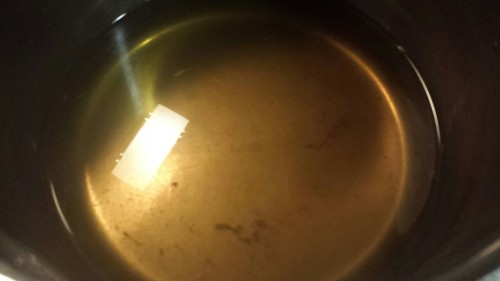


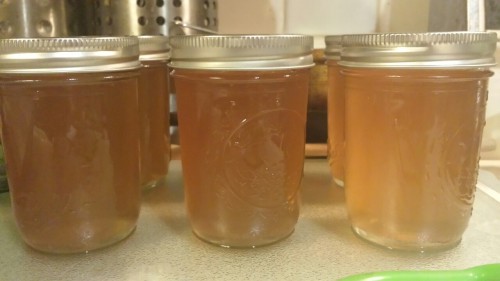
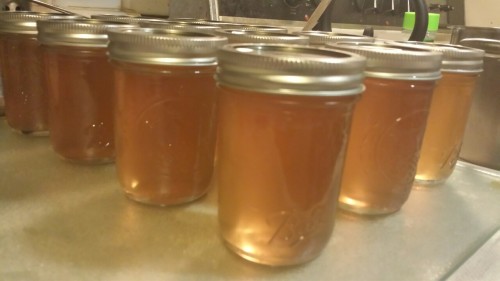
DANDELION JELLY! !! It tastes like honey! 🐝🐝🐝🐝🐝🐝🐝🐝🐝🐝🐝 been a busy bee last few days harvesting flowers, plucking petals, extracting nectar, straining and canning this delicious jelly! Very Tideaous work but it’s worth it!
3 cups dandelion tea (made from 4 cups of petals in boiled water overnight ) 4 cups of sugar 2 tbsp fresh lemon juice 6 tbsp of regular ball fruit pectin Water bath can for 10 minutes Makes 6 - ½ pints
4/20/16
sustainability as a concept done on an individual basis shouldn’t be framed as planet saving because it’s. not. you can’t save the earth by planting your own tomatoes, because the destruction of the earth is due to corporations
what you CAN do is use individual sustainability to gain a level of independence from capitalism for yourself and for your community through things like sharing grown food
Nature


Matt Zeilinger, Solarpunk Girl (portrait of Krishna Jaya)
How I Got into Backyard Farming
Idea:
Backyard Farming sounds crazy, so let’s try it
What is it?
There is a movement where regular people are turning their backyards into micro farms and doing things like:
Growing all the salad ingredients they need for a year (minus the Russian dressing)
Growing 100 pounds of potatoes on a tiny patio
Raising a couple of chickens for meat and/or eggs
Raising Talapia fish to eat
Raising rabbits or quail for meat
Converting lawns into mini farms producing staple crops like corn and wheat
Using things like fences, walls, posts and garages to trellis things like grapes, squash, beans, and melons
Growing 100 pounds of garlic and selling it for $10 a pound at farmers markets
Raising bees and selling honey for $7 a pound at farmers markets
Making your own Beer, Wine, Meade, Cider or Brandy
Why this could be Awesome:
The goal here is that you do these things on your property without anyone really noticing or caring. The goal is not to start up some “you might be a redneck if” style crazy farm on the lawn and instantly tank the neighborhood housing prices in the process. With this project the goal is to be clandestine, or at least unnoticeable. Do it right and neighbors will compliment how well your property looks as you bring them goodies from the garden all year long. Other reasons this scheme could be awesome:
Lower your grocery bills
Be totally organic and chemical free
Potentially earn income
Less lawn mowing / Less using anything that runs on gas
Could be Fun
My Situation:
I live in a typical Cape Cod house on a quiet street in a medium sized city in Ohio. I have neighbors very close on both sides and in the back. In total I have about 0.3 acres of “land” which consists of a small front yard and a descent sized backyard enclosed in a chain link fence. I have a tiny 1-car garage, a small patio, and normal guy yard tools.
Research Phase:
I went to the library and to the internet and looked up the following topics:
Small space / patio / container gardening
Permaculture / food forests / Organic Gardening
Homesteading / Survivalist / Prepper (I’m not a prepper)
Aquaponics
Take a look at some YouTube videos on people who have backyard food forests. Also Jeff Lawton’s videos on this topic are amazing. I also recommend the book Gaia’s Garden and the website Permies.com
Let’s Do This:
And so when Spring rolled around I began… The plan was to start small and incorporate little things at a time into my landscape, wait until I was used to them and make sure no one freaked out, and then slowly expand.
Things I have Accomplished:
I’m on year three now and I think things are going relatively well. Here’s a summary of things I have been able to do. Note: Each topic below will have its own full post soon.
Toxin Free: Gave up insecticide, commercial fertilizer and other toxins totally.
Compost: Created a composting system that produces about 1 pickup truck load of compost per year.
Waste Reduction: Generate zero yard waste. Generate 1-2 bags of garbage per week, which is a reduction from 5 bags. This reduction is due to composting, canning, burning paper with wood fires and using ashes in garden, reduction of processed foods purchased, etc.
Rainwater harvesting: Made and Installed 2 Rain Barrels (55 gallons each), with a system to auto water the front yard with the flip of a switch using garden hose and gravity
Lawn Reduction: More than half of my front yard is garden (but doesn’t look out of the ordinary at all). Converted 1/3rd of my backyard to garden
Hugelkultur: Installed about 56 feet of Hugelkultur mounds
Heavy Mulching: Threw down 2 dump truck loads of mulch, 3 pickup load of hay (about 40 bales) and 1 pickup load manure.
Sheet Mulching: Experimented with Sheet mulching using cardboard and other materials to convert lawn to garden without digging.
Less Weeds: Cut weeding time down by using mulching techniques as well as chop & drop methods. (you still get weeds, but less, and easier to pull)
No Dig / No till: Gave up Tilling totally. There are many good reasons to do this.
Less Mowing: Mow only about 4-6 times a year (due to letting certain “weeds” grow into the lawn such as clover which doesn’t grow very tall). Also, I mow the front lawn every other time with a gas free reel push mower, which saves gas and is very quiet (and a good workout).
Less Watering: Cut watering in half (because of the rain barrels, a well-placed swale to slow down run-off and Hugelkultur mounds which soak up water like crazy)
Perennial Food: Planted long-term plants such as 2 apple trees, 1 cherry tree, 2 blueberry bushes, 2 raspberry and 2 blackberry bushes, 10 square feet of strawberries, 2 grapevines, 8 asparagus plants.
Quasi Perennial Food: Tomato patch comes back 80% every year from self seeding. Also get a lot of self seeded greens and squash, by not picking everything.
Seed Starting: Beginning to perfect a seed starting regimen that is actually starting to pay off. Seed starting takes practice!
Big Crops: Set to plant about 50 garlic plants this year. Set to plant about 30 potato plants this year (these two plants both can be mixed into the front yard landscape). Planted about 60 mustard green plants (also a beautiful plant)
Medicine: Growing comfrey to be used for medicinal purposes as well as green manure / mulch.
Cool mini-Projects: Things I have made from my backyard include Grape Juice, Vinegar, Tomato juice, Dijon Mustard, Tomato sauce, Roasted Dandelion Root coffee, Echinacea tincture, garlic braids, burn medicine, flower arrangements, and lots of delicious meals.
Things I want to Try:
There are so many things in backyard farming/ urban permaculture I still want to try. Here is my to-do list:
Plant way more fruit trees. The ultimate goal of the permaculture “food forest” is basically to have tons of food growing everywhere on your property that requires little to no maintenance. The hardest part should be picking all of the bounty. Of course a key to this end state is to have lots of mature fruit trees that produce large quantities of high calorie foods year after year. And even in cold Ohio, we can grow so many different kinds of fruit like cherry, apple, peach, plum, apricot and lots of berry and nut trees
Plant a successful cash crop. I want to sell something at the farmers market! I think garlic will be my first attempt because it is 100% maintenance free and 99% guaranteed to come up beautiful. It also sells for a lot of money. So far I have been eating mine, but each year I plant more and more. One other nice thing is that you can space them really close together and plant them almost anywhere on the property, including right out in the front yard. I tried to sell my mustard greens but nobody wanted them :(
Get bees. Although probably not for everyone, I want bees. There is some cost and some work involved, but you get honey, wax and increased pollination, and that is more than enough for me to want to try it.
Meat? I’m not allowed to have chickens or any animal like that in my city. Rabbits could work since they are silent and you could raise them somewhere covert and no one would know you had them. But I don’t think I could kill and clean rabbits I raised. I looked into pheasant and quail but same thing there.
Eggs? I’m not yet to the point where I’m going to defy my local laws and get a couple of chickens for egg productions, but If you are, there is a whole community on the net of covert chicken raisers. The more hip urban cities such as St. Louis have legalized it, so do some research and go for it. Don’t get any roosters unless you want to anger everyone within a 5 mile radius.
More Mulch! Once you get into this hobby you quickly find that your soil sucks. If you have a typical American house your soil is terrible because for the last 50 years your property has consisted of 90% grass which some guy mowed short twice a week and probably dumped mass quantities of weed and feed and other chemicals onto it. All of the clippings were bagged and sent to the landfill and heavy rains continuously washed away any soil that happened to build up. The fix is to throw down tons and tons of organic material like leaves, cut up weeds, hay, mulch, coffee grounds, manure, compost, etc. But if you are a regular person with an office job you probably don’t have access to as much of this organic mulch as you need. I’m always on the lookout on Craigslist for free manure and mulch, but it can be hard to come by. You can grow your own, but this takes time.
Flowers I got so caught up with food that I realized I didn’t plant many beautiful flowers that can serve multiple purposes. I want them for cut flower arrangements as well as for medicinal purposes and sheer beauty. Next year there will be flowers!
Edible Seeds: I also want to get some edible seeds such as sunflower and pumpkin, yum! Per square foot, sunflowers are one of the most productive foods you can grow, calorie wise.
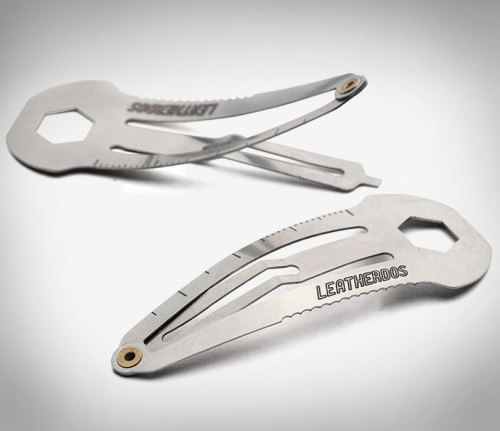
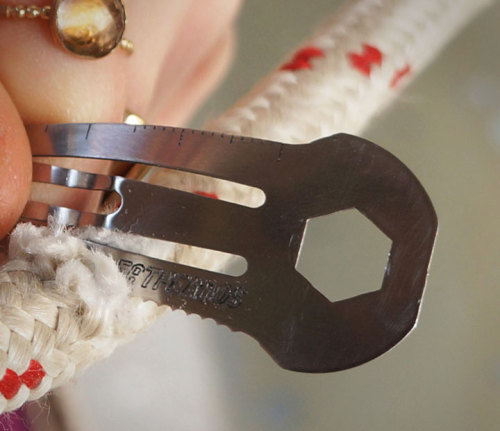
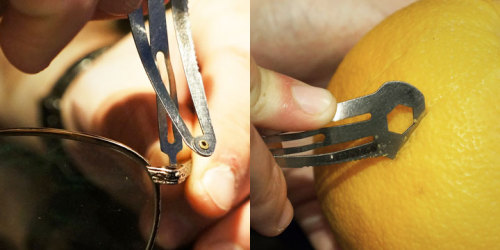
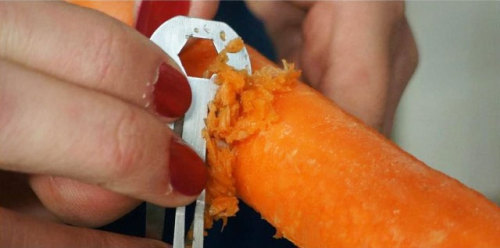
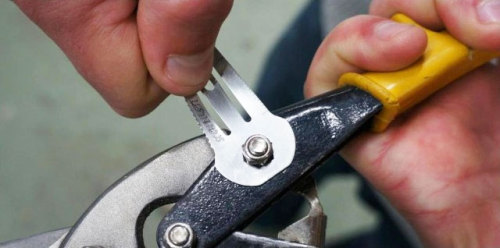
The Leatherdos is a hair clip that doubles as a multi-tool that combines 5 different tools in a tiny hair clip: screw-drivers, a wrench, a trolley coin, a ruler, and a cutting edge.
—->http://odditymall.com/leatherdos-is-a-hair-clip-multi-tool

https://www.democracynow.org/2018/12/13/you_are_stealing_our_future_greta
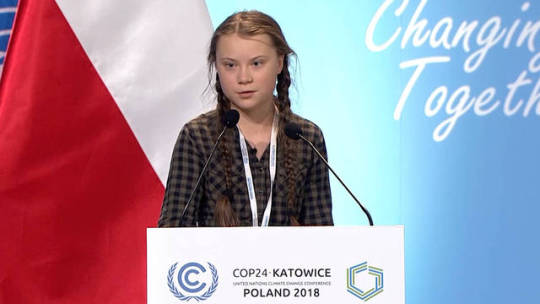

[Top left: Green onion seedlings. Bottom left: Baby basil seedlings. Right: A jungle of thyme.]
I’ve been growing some veggies indoors for a while now (almost a year?) and we finally got the lighting right for the plants. These little guys are completely solarpunk/lunarpunk. I live out in the country and for some reason that wasn’t known to us until after we bought our house there is a ban on all veggie growing and structure building. So we couldn’t even build an outdoor greenhouse. These little guys are growing in a legit solarpunk recycled diy’d greenhouse structure inside my garage. Eventually we are going to try and go with completely heirloom non-gmo organic seedlings but until then these little guys are fighting unjust zoning regulations, fighting our ever increasing dystopian reality (I have a yard and I can’t plant things!), and living it up #solarpunk style.
Did I mention our neighbors are bending these rules too? :) I’m not the only solarpunk in my area. My neighbor plants mint and strawberries in their flowerbeds and planted a plum tree right between our property lines so that when it matures no one can say it was theirs or that the regulation people didn’t know about it. It’s been there for years people. I’ve also started some mint and lavender bushes myself. They can ask me all they want about what they are… I’ll just tell them they’re decorative.
Now, I’m not saying that people should do these things. Bending the rules can get you into trouble. But my area is poor and people are hungry, local food pantries have been closing too and without these solarpunk guerrilla gardening tactics people would go hungry. I only know three of my neighbors because everyone keeps loosing their homes. Neighbors last about a year here and then are forced to leave.
At my old town just 20 min away from where I live now, we grew grapes and apples and let whoever was hungry have them. Our neighbors sometimes foraged. There were wild apple trees, grapes, and mulberries and people knew where they were and when they were ready to be picked. It helped a lot of people who wouldn’t have had anything to eat otherwise. banning food sources is what should be illegal. Not tending to gardens. Gardens and plants should never be banned. We live on a living planet, it’s what kept us alive all these centuries. Why are we turning our back on it now?
7 reasons why solarpunk is the most important speculative fiction movement in the last 20 years
It’s hopeful. Solarpunk doesn’t require an apocalypse. It’s a world in which humans haven’t destroyed ourselves and our environment, where we’ve pulled back just in time to stop the slow destruction of our planet. We’ve learned to use science wisely, for the betterment of ourselves and our planet. We’re no longer overlords. We’re caretakers. We’re gardeners.
Scientists are heroes again. And not just physicists and astronomers. Knowledge of biology and earth sciences matter, they’re the building blocks for a future on Earth. Scientific literacy isn’t just for academics – it’s part of daily life. People know how the things they use work, and if they don’t, they can access that information.
It’s diverse. Solarpunk is rooted in using the environment, so it looks different in different places. Alternative energy is best when specific to place (I imagine geothermal, wind, tidal, and hydroelectric energy sources are still used in certain places) so no overarching government system is needed. Communities can organize themselves, taking their own location and needs and history into account. Brazilian, Inuit, Egyptian, Pacific Northwest, and New Zealand solarpunk can all look very different, but be unified in resourceful, intentional, low impact living.
Individuality still matters. In a post-scarcity society, ingenuity and self-expression are not sacrificed on the altar of survival. With solar power there’s no reason not to go off grid, if that’s what you want to do. Communities can self-organize. You can find a community that suits you, or go live by yourself if that floats your boat.
There’s room for spirituality and science to coexist. Solarpunk is rooted in a deep understanding and reverence for natural processes. There’s room for spirituality there, be it pagan, Buddhist, Sufi, Transcendentalism – anything. There’s so much to explore, from nature worship to organized monotheistic religions, and how they interact with solarpunk.
It’s beautiful. The most common solarpunk aesthetic is art nouveau, but again there’s room for diversity, incorporating art styles from multiple cultures in respectful, non-appropriative ways. The most important aspect of solarpunk aesthetic is the melding of art and utility. The idea of intentional living is strong in art nouveau, but it’s not the only art movement with that philosophy.
We can make it happen. Now. Earthships. Permaculture. Aquaponics. Algae lighting. Compostable products that turn into fields of flowers. Buy Nothing organizations. Tiny, beautiful, efficient homes. Solar power cells you can see through. That’s all happening now. Solarpunk is within our grasp, at least on a personal level. I’m not saying there aren’t still big, ugly infrastructures devoted to unethical consumption, but we can start to tear them down. We can build a solarpunk world with stories and small changes. And small changes lead to big changes. That’s the real beauty of solarpunk. It’s not a post-apocalyptic power fantasy. It’s not a wistful daydream, or an elite future only for physicists. It’s something we can work towards right now. It’s tangible.
-
 tropical-bebesita reblogged this · 4 years ago
tropical-bebesita reblogged this · 4 years ago -
 tropical-bebesita liked this · 4 years ago
tropical-bebesita liked this · 4 years ago -
 left-pinterest-for-this-hellsite liked this · 6 years ago
left-pinterest-for-this-hellsite liked this · 6 years ago -
 bumblebeeappletree reblogged this · 6 years ago
bumblebeeappletree reblogged this · 6 years ago -
 bumblebeeappletree liked this · 6 years ago
bumblebeeappletree liked this · 6 years ago -
 starrfish97 reblogged this · 6 years ago
starrfish97 reblogged this · 6 years ago -
 all4god reblogged this · 6 years ago
all4god reblogged this · 6 years ago -
 lizardinabigwizardhat liked this · 6 years ago
lizardinabigwizardhat liked this · 6 years ago -
 writer-lythings reblogged this · 6 years ago
writer-lythings reblogged this · 6 years ago -
 starlightburden reblogged this · 6 years ago
starlightburden reblogged this · 6 years ago -
 copperfingertips reblogged this · 6 years ago
copperfingertips reblogged this · 6 years ago -
 abstractfondness reblogged this · 6 years ago
abstractfondness reblogged this · 6 years ago -
 abstractfondness liked this · 6 years ago
abstractfondness liked this · 6 years ago -
 this-of-all liked this · 6 years ago
this-of-all liked this · 6 years ago -
 solarpoweredcreature liked this · 6 years ago
solarpoweredcreature liked this · 6 years ago -
 abyss-tidalpunk reblogged this · 6 years ago
abyss-tidalpunk reblogged this · 6 years ago -
 cosmicstarbaby95 reblogged this · 6 years ago
cosmicstarbaby95 reblogged this · 6 years ago -
 hocuspocusholt-blog reblogged this · 6 years ago
hocuspocusholt-blog reblogged this · 6 years ago -
 bluebear2232 liked this · 6 years ago
bluebear2232 liked this · 6 years ago -
 solar-libra liked this · 6 years ago
solar-libra liked this · 6 years ago -
 fckyeahnarnia liked this · 6 years ago
fckyeahnarnia liked this · 6 years ago -
 wildwolfflower reblogged this · 6 years ago
wildwolfflower reblogged this · 6 years ago -
 wildwolfflower liked this · 6 years ago
wildwolfflower liked this · 6 years ago -
 srql32 reblogged this · 7 years ago
srql32 reblogged this · 7 years ago -
 ellenya liked this · 7 years ago
ellenya liked this · 7 years ago -
 wachtuiltje reblogged this · 7 years ago
wachtuiltje reblogged this · 7 years ago -
 lvli liked this · 7 years ago
lvli liked this · 7 years ago -
 notiok reblogged this · 7 years ago
notiok reblogged this · 7 years ago -
 mermaid-sinead reblogged this · 7 years ago
mermaid-sinead reblogged this · 7 years ago -
 theprincesswhocries liked this · 7 years ago
theprincesswhocries liked this · 7 years ago -
 refraodebolero reblogged this · 7 years ago
refraodebolero reblogged this · 7 years ago -
 curlyrena reblogged this · 7 years ago
curlyrena reblogged this · 7 years ago -
 papercuts-and-pencils liked this · 7 years ago
papercuts-and-pencils liked this · 7 years ago -
 bluec liked this · 7 years ago
bluec liked this · 7 years ago -
 mondklar reblogged this · 7 years ago
mondklar reblogged this · 7 years ago -
 gvnsey reblogged this · 7 years ago
gvnsey reblogged this · 7 years ago -
 magicgoldenhair reblogged this · 7 years ago
magicgoldenhair reblogged this · 7 years ago -
 moodiepeach reblogged this · 7 years ago
moodiepeach reblogged this · 7 years ago -
 moodiepeach liked this · 7 years ago
moodiepeach liked this · 7 years ago -
 blue-ishpetit reblogged this · 7 years ago
blue-ishpetit reblogged this · 7 years ago -
 smallhumanperson liked this · 7 years ago
smallhumanperson liked this · 7 years ago -
 xmushroomfaerie liked this · 7 years ago
xmushroomfaerie liked this · 7 years ago -
 fineish reblogged this · 7 years ago
fineish reblogged this · 7 years ago